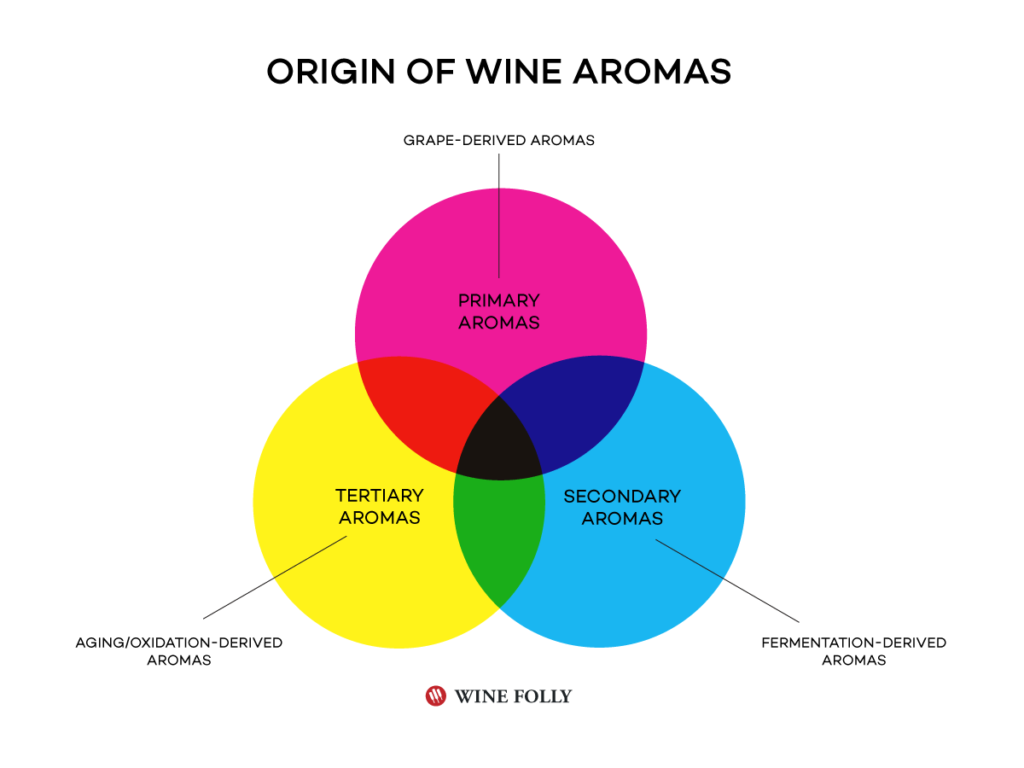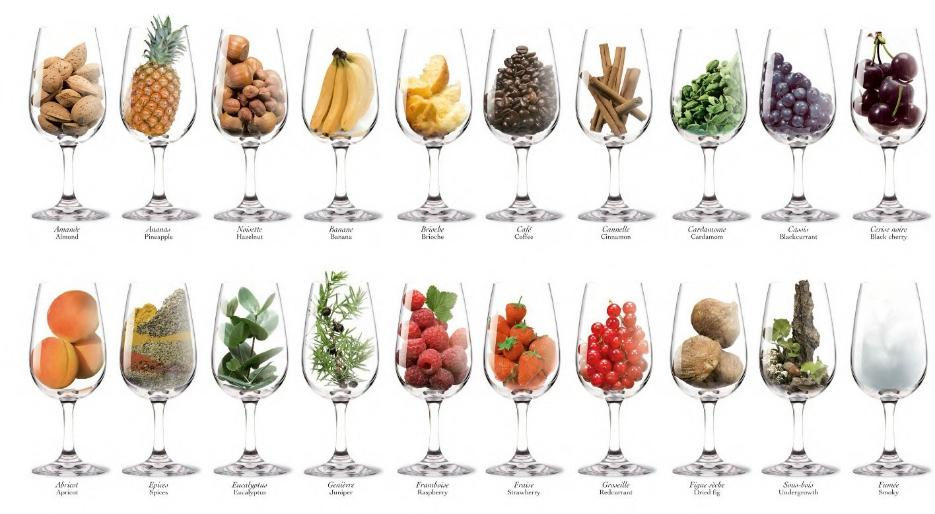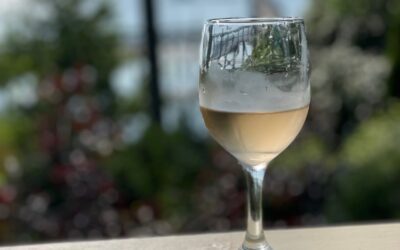I’m asked a lot of questions as a wine educator and how to describe what we smell and taste when drinking wine is one of the top queries. I’m holding a French Wine Blind tasting event Thursday June 8, 2023 at Maison Navarre in Portsmouth, NH and thought I’d give a little advice on how to describe what you’re experiencing on the nose and palate. If you break it down, it is not all that difficult. It is very important, though, so much that the first session of both level 2 and level 3 Wine & Spirit Trust Certificates in Wine is devoted to learning how to describe what you experience.
First, although in WSET classes we use a lexicon and the Strategic Approach to Tasting (SAT) so that people from all over the world have a common set of descriptors to use, tasting wine is SUBJECTIVE. My raspberry may be your strawberry, or I may think it is a red plum flavor and you think black plum. My favorite example is when a friend took a sniff of a wine, she described it as “kitty litter”. Well, don’t think what you are thinking – she uses floral litter, and it reminded her of THAT scent.
Another thing – aromas generally match what you taste on the palate but not always. Aromas give us a hint of what’s to come and some information about the wine. Some people have amazing noses that can identify everything, and others find it more challenging. Don’t be concerned if you do not smell an aroma – you can get a lot of information from your palate.
Aromas and flavors are divided into three categories, and not all wines will have all three.

Primary
These are from the grape and from changes that occur chemically during fermentation. For the look for categories and then narrow down to more specific characteristics. For example
Citrus: lemon, lime, grapefruit, lemon peel, mandarin
Red berries: raspberry, strawberry, red currant, cranberry
Herbaceous: asparagus, tomato leaf, lemongrass, mint, eucalyptus
Tropical fruits: banana, mango, pineapple, passionfruit

Secondary
These aromas and flavors are from the winemaker’s techniques in creating the wine. Many wines will NOT show any of these characteristics, especially is they are made to be fresh and fruity. They fall into three main categories:
Oak influence: vanilla, cedar, smoke, toast, spice, coconut
Lees/autolysis: bread, biscuit, brioche, yeast
Malolactic conversion: butter, cheese, yogurt
Tertiary
With time in the bottle, wines age and aromas and flavors change. Fresh fruit flavors take on more of a cooked or dried fruit aspect. Many wines develop earthy notes, like mushroom, forest floor, leather. Honey and nuts also show age.
The best way to identify these aromas is to swirl your glass to release molecules into the air and take a sniff. Switching the wine in your mouth is a way to gain more information about flavors as well. Aromas and flavors can tell you so much about a wine – the variety, where it was grown, the winemaking techniques, its age. Use these skills to be what I call a “Wine Detective” It’s a lot of fun and it makes drinking wine so much more interesting!
Cheers!



